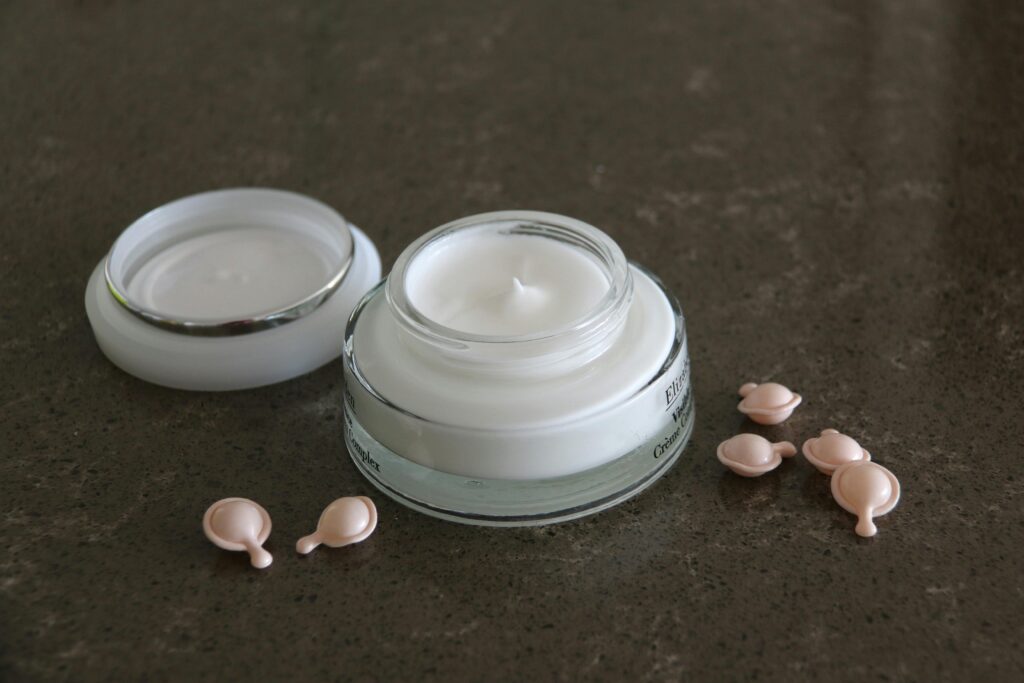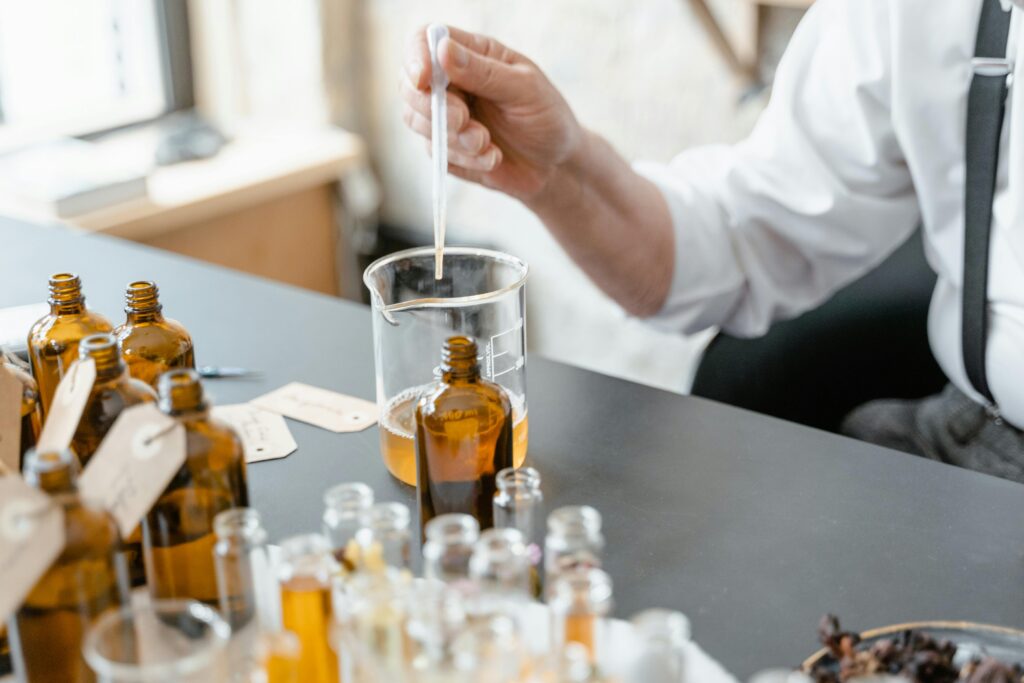What Is Niacinamide and Why Is It in So Many Skincare Products?
Niacinamide—sometimes listed as nicotinamide—is a form of vitamin B3. While our bodies need vitamin B3 to carry out essential cellular functions, our skin especially benefits from its topical application. Unlike niacin (its chemical sibling), niacinamide doesn’t cause skin flushing and is stable in many types of skincare formulations.
Here’s what makes it uniquely useful: niacinamide is a precursor to NAD⁺ (nicotinamide adenine dinucleotide), a molecule essential to hundreds of skin-related enzymatic reactions. NAD⁺ helps regulate energy metabolism, antioxidant defenses, and DNA repair. In skincare terms, niacinamide acts as a cellular supporter—it gives your skin the resources it needs to self-correct, rather than forcing surface-level changes.

Fun fact: Eating foods rich in B3 may support your overall health, but niacinamide’s skin benefits are best delivered topically, right where they’re needed.
- What Is Niacinamide and Why Is It in So Many Skincare Products?
- What Niacinamide Actually Does for Your Skin
- How Niacinamide Is Actually Used in Skincare
- What Makes a Niacinamide Formula Truly Effective?
- What Can You Combine Niacinamide With—and When Should You Be Cautious?
- Is Niacinamide Safe for Everyone?
- How Niacinamide Compares to Other Actives
- Who Benefits the Most from Niacinamide?
- How to Use Niacinamide—Without Overthinking It
- Key Takeaways
- Want to Try It?
What Niacinamide Actually Does for Your Skin
Let’s move beyond claims and look at what peer-reviewed studies actually show about niacinamide’s effect on the skin.
It Strengthens the Skin Barrier
The outer layer of your skin is your first line of defence. Niacinamide enhances the production of ceramides, filaggrin, and other key proteins that fortify this layer. As a result, skin becomes better at holding onto moisture and less reactive to environmental stressors. Studies have shown improvement in transepidermal water loss and hydration, particularly in sensitive skin and rosacea-prone skin.
It Calms Irritated Skin
Niacinamide helps regulate inflammation at the cellular level. It reduces the expression of inflammatory cytokines like TNF-α and IL-8, which are often elevated in conditions like acne, rosacea, and even sun-damaged skin. This anti-inflammatory action is subtle but sustained, making it suitable for long-term use.
It Helps Even Skin Tone
Rather than bleaching or suppressing melanin production entirely, niacinamide targets the transfer of melanin between skin cells. This results in a more even distribution of pigment and a gradual fading of sun spots and post-inflammatory discolouration. It does this without the irritation often associated with ingredients like hydroquinone.
It Supports Cellular Repair and Resilience
One of niacinamide’s lesser-known strengths lies in its ability to replenish NAD⁺. By doing so, it helps the skin repair oxidative stress, support enzymatic functions, and maintain resilience after UV exposure. This indirect antioxidant support doesn’t just defend your skin—it enables it to heal more efficiently.

How Niacinamide Is Actually Used in Skincare
Where You’ll Find It
Niacinamide is most effective in products that stay on your skin, like serums and moisturizers. These formats allow it time to be absorbed and act on the deeper layers of the epidermis. Many of the clinical trials validating its efficacy used leave-on formulations, not rinse-off cleansers.
Finding the Right Strength
Concentrations of 2–5% have been consistently shown to improve skin tone, barrier function, and hydration. Some modern products boast 10% or more, but this doesn’t always translate to better results. In fact, at higher levels, niacinamide may increase the risk of redness or stinging, particularly in those with already compromised skin barriers.
Does More Mean Better?
Not really. Concentrations above 5% may lead to irritation, especially if the product isn’t carefully formulated. Delivery system, ingredient interactions, and pH stability are often more important than raw percentage.

Formulator insight: A lower-concentration serum with excellent vehicle design will almost always outperform a stronger formula that’s unstable or poorly absorbed.
What Makes a Niacinamide Formula Truly Effective?
The Importance of pH
Niacinamide is stable between a pH of 5.0 and 7.0. If the pH drops too low—like in formulas that contain pure vitamin C (ascorbic acid)—niacinamide can degrade into nicotinic acid, a compound known to trigger flushing and irritation in some users. It’s not dangerous, but it can be unpleasant.
Smart Delivery
An emerging method to improve niacinamide’s delivery involves encapsulation. These small capsules can hold and gradually release niacinamide, offering longer-lasting activity and reducing the chance of irritation. This is particularly beneficial in formulations designed for sensitive skin.
Ingredient Synergy
Niacinamide works well alongside skin-soothing ingredients like glycerin, panthenol, and ceramides. These combinations help restore hydration and barrier function, making niacinamide even more effective. It can also buffer irritation from stronger actives like retinoids, though care should be taken with how and when they’re layered.

The best niacinamide product isn’t the one with the highest percentage—it’s the one that’s well designed, with the right dose, a stable formula, and ingredients that work together.
What Can You Combine Niacinamide With—and When Should You Be Cautious?
One of niacinamide’s strengths is its flexibility. Thanks to its water solubility and stability in a skin pH range (between 5 and 7), it fits well into most formulations without clashing chemically with other ingredients. But “compatible” doesn’t always mean “carefree.”
You’ll often see it formulated alongside ingredients like panthenol, ceramides, and glycerin—all of which reinforce the skin barrier and complement niacinamide’s ability to support hydration. When used thoughtfully, niacinamide can ease irritation associated with more intense ingredients like retinoids, creating a buffer effect that makes retinol tolerable for sensitive users.
One area that deserves special attention is the conversation around vitamin C. Niacinamide and ascorbic acid (pure vitamin C) have long been rumored to be incompatible. This is based on concerns that, in acidic conditions, they can convert into nicotinic acid—a compound known to cause skin flushing. But these reactions are more theoretical than practical. Modern formulations can stabilize both ingredients in the same product, provided the pH and delivery vehicle are carefully controlled. That said, layering separate niacinamide and low-pH vitamin C products can still be risky for sensitive skin. If irritation occurs, spacing them out—using vitamin C in the morning and niacinamide at night.
Is Niacinamide Safe for Everyone?
In general, yes. Clinical research has shown niacinamide to be well-tolerated across a wide range of skin types, including those prone to redness, sensitivity, and inflammatory conditions such as rosacea and acne. However, context matters.
When used at higher concentrations—typically above 5%—niacinamide may cause temporary redness, stinging, or a feeling of warmth. These effects aren’t allergic reactions, but signs that your skin barrier might be stressed or that the product is over-concentrated for your skin’s current condition. If that happens, scale back. Use it less frequently, layer it under a barrier-supportive moisturiser, or simply switch to a lower concentration.
How Niacinamide Compares to Other Actives
To understand niacinamide’s place in your skincare strategy, it helps to compare it to other actives often used for pigmentation, texture, and barrier repair. Here’s a simplified breakdown of how niacinamide compares to retinoids and vitamin C in terms of function, tolerance, and formulation compatibility:
| What It Does | Niacinamide | Vitamin C (Ascorbic Acid) | Retinoids (e.g., Retinol) |
|---|---|---|---|
| Supports Skin Barrier | Helps strengthen the skin’s natural protective layer and reduces water loss. | May weaken the barrier, especially in sensitive skin. | Can irritate at first, but strengthens skin over time. |
| Antioxidant Protection | Works indirectly by supporting skin energy (via NAD⁺). | Acts directly to neutralise free radicals (environmental damage). | Provides some indirect antioxidant benefits. |
| Fades Pigmentation | Stops melanin from moving to skin’s surface (prevents uneven tone). | Slows melanin production (helps brighten). | Speeds up cell turnover to fade dark spots. |
| Risk of Irritation | Very low, especially at 2–5% strength. | Moderate—can cause tingling or stinging. | High—often needs a slow introduction to avoid irritation. |
| Best pH for Effectiveness | Works best in skin-friendly pH (around 5–7). | Needs a low (acidic) pH—around 3.0–3.5—to be effective. | pH depends on the specific formula—varies widely. |
| Who Can Use It | Safe for nearly all skin types, even sensitive. | Best to introduce gradually to avoid irritation. | Use cautiously if you have sensitive skin or are new to it. |
Retinoids work by increasing cell turnover, accelerating exfoliation and revealing fresh skin. But this can come at the cost of irritation, flaking, and initial sensitivity. Vitamin C (ascorbic acid) functions as a direct antioxidant, scavenging free radicals and boosting collagen synthesis, but requires an acidic pH to remain stable and effective.
Who Benefits the Most from Niacinamide?
If your skin tends to be reactive, dehydrated, or prone to uneven tone, niacinamide is worth your attention. It’s especially well-suited for people who:
- Experience sensitivity, redness, or rosacea
- Are new to active skincare and want to build a barrier-first routine
- Want to even out hyperpigmentation without the risks associated with stronger brightening agents
- Are using retinoids and need a supportive companion to minimize irritation
It also shows promise for those managing excess oil or enlarged pores. Some clinical studies suggest that niacinamide may help regulate sebum output, particularly in oily skin types. While not a substitute for prescription treatments, it can be a helpful adjunct in managing shine and congestion.
How to Use Niacinamide—Without Overthinking It
Start with a serum or moisturiser that contains 2–5% niacinamide. This is the concentration range most consistently supported by clinical data. Apply once a day for the first couple of weeks and monitor how your skin responds. If all goes well, you can gradually increase to twice-daily use.
Suppose you’re layering with stronger actives like acids or retinoids. In that case, it helps to introduce niacinamide during a low-stimulation part of your routine—perhaps in the morning, while reserving your exfoliants or retinoids for evening use. And as always, finish with broad-spectrum SPF. While niacinamide supports repair, prevention is still your best tool.
Key Takeaways
- Niacinamide improves skin tone, hydration, and barrier function by supporting core biological systems.
- Most effective at 2–5% concentrations, especially in leave-on products with neutral pH.
- Compatible with many ingredients, but pH and formulation matter—especially when combining with acids like vitamin C.
- Best suited for sensitive, acne-prone, or barrier-damaged skin, and works well as a companion to stronger actives.
Want to Try It?
If you’re building a skincare routine rooted in science, niacinamide is a safe and thoughtful place to start. But remember: formulation matters more than trend appeal. Look for products that prioritise ingredient synergy, stability, and your skin’s current needs.
Have you used niacinamide before? What worked—or didn’t—for your skin? I’d love to hear what your experience has been, and whether your formulation made a difference.
Talk to you soon!
Dr Bozica
References:
https://www.mdpi.com/2076-3921/10/8/1315
http://mdpi.com/2076-3921/13/4/425